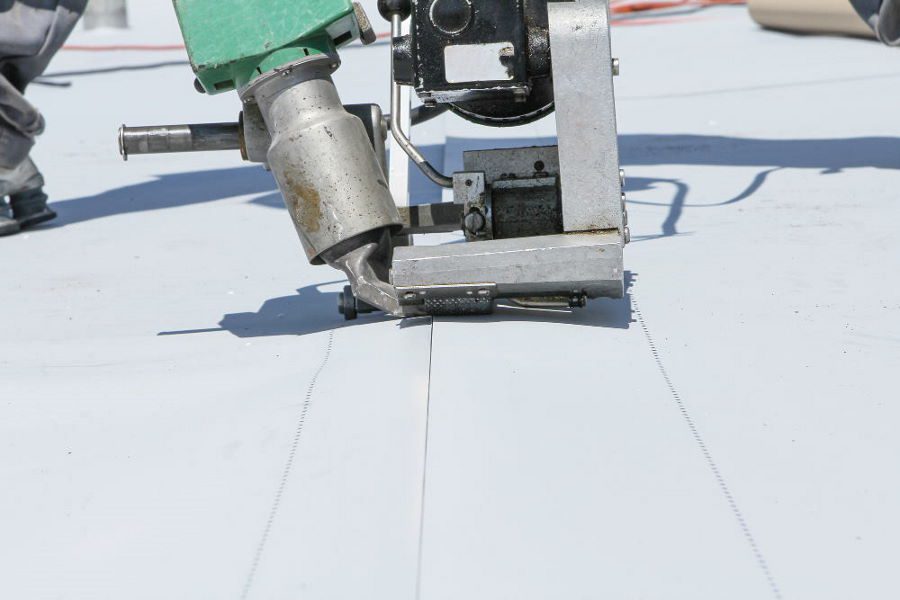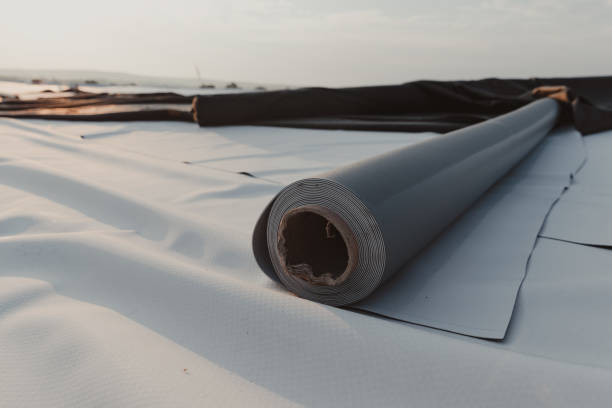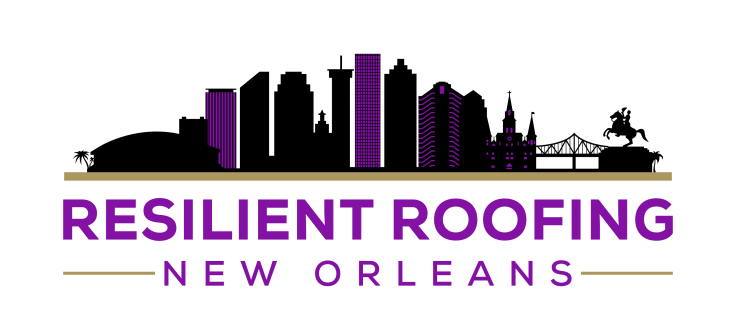For the Highest Quality Roofing at the Most Competitive Prices, Contact Us Today. Any questions? Call and ask!
For the Highest Quality Roofing at the Most Competitive Prices, Contact Us Today. Any questions? Call and ask!
A single-ply PVC roofing membrane is a thermoplastic sheet that is manufactured from polyvinyl chloride (PVC). It is an impermeable roofing membrane that is used for waterproofing flat or low-slope commercial roofs. It is one of the three popular single-ply roofing membranes along with TPO and EPDM.
PVC roofing is economical, durable, and waterproof. It can be made to operate at a wide variety of temperatures, which makes it very versatile. In addition, this membrane has a protective layer that is not affected by ultraviolet rays or ozone, which also helps it last longer.
Single-ply roofing is most appropriate for flat or low-slope commercial roofs that require waterproofing. It forms a watertight, airtight barrier that resists moisture collection in most roof systems and eliminates problems such as mold and mildew. In addition, many single-ply roof membranes are inherently flame-retardant, which means that they are safe to use on rooftops near buildings with automatic fire sprinkler systems.
Get a Free Quote
PVC roofing membranes are less expensive than traditional corrugated metal or built-up roofing systems. They are lightweight, making them easier to handle. The fact that they form an airtight seal eliminates the risk of thermal stress cracking in colder environments. Here are some other advantages of PVC roofing:
PVC membrane is joined using hot welding. This process fuses and strengthens the material to form a stronger, more rigid structure. In addition, PVC roofing membranes can be seamed together to cover longer areas. This helps reduce the number of joints in the roof, leading to leakage or other problems.
PVC membrane is resistant to ultraviolet rays, which are the primary cause of roofing materials’ deterioration. Therefore, they do not fade or become brittle in bright sunlight. However, everything has a lifespan, and eventually, this roofing membrane will need to be replaced.
PVC membrane is inherently fire retardant, making them safe to use on rooftops where there is a high risk of fire. In addition, this material does not ignite or burn easily, so there is far less risk of the roof being damaged in the event of a fire.
PVC roofing is available in multiple colors. These include white, beige, grey, black, etc. Moreover, you can even have different colors for different parts of the same roof to make it more interesting visually.
Another benefit of going with PVC roofing membranes is that you can choose between dark and light color membranes depending upon your climate. Light color PVC roofing membranes perform better in warmer areas, and darker roofs are preferable for cooler climates.
PVC roofing membranes use recycled materials and do not contain harmful chemicals such as ammonia, sulfur chloride, or chlorine. Moreover, this material does not emit any gases that may harm plant life around the building.
PVC membrane is known for its durability. But nothing lasts forever, and this membrane will eventually need to be replaced every 20-30 years, and inspected/maintained regularly. The main disadvantage of using it is the high initial cost as compared to similar single-ply membranes.
In addition, you will have to work with a professional installer as installing PVC roofing should not be attempted by an amateur, or even a new professional. Hot welding seams require experience and knowledge, which can lead to leaks if not done right. Moreover, PVC roofing requires seams that are closely butted together for maximum performance.
The cost of a PVC Roofing is per square foot. The average price is about $8, which varies depending on the size of the project. The cost per square will be lower for a larger area because the overhead cost of transportation will be the same.
The complexity of a roof has a big impact on its price. For example, if there are chimneys, corners, skylights, or dormers, the price will be higher. Also, the thickness of the roofing will influence pricing. For example, if you want a thicker material to withstand more snow and weight, you should expect to pay more.

The process includes several steps. Each step must be done properly to ensure that the roof is safe and to resist weather conditions. The installation usually takes two or three days, depending on how big your building is. Because of this, costs will vary depending on the area to be covered and the number of days required for installation.
The first step is to determine if your roof can hold a PVC membrane by checking if it’s structurally sound. Your contractor will also need to check that there aren’t any leaks in the roof already since this could create bigger problems when you install new material.
Get a Free Quote
After clearing out any debris from your roof, the contractor should clean it with a wire brush or broom to remove dirt, dust, and lost particles. They must also make sure that all nails are driven down below the surface to damage the membrane unintentionally.
Next, you need to prepare for hot-air welding because this is crucial for PVC roofing installations. The contractor will need to know the exact location of all seams to ensure that hot air is applied in the right spot. For example, if you have a skylight or chimney, the contractor will have to set up an insulated box around it with a vent on top.
Step Three is to lay down the membrane, which can be done by using adhesive tape or mechanically fastening it. Again, you should check with your contractor about the best option if you are unsure.
The final step is to ensure that the roof has no leaks by carefully inspecting all seams, corners, and skylights. It would help if you also inspected your chimney or vent box for any insulation damage after installation since this could create bigger problems in the future.
PVC membranes do not require a lot of maintenance. The most you’ll have to do is remove debris from the roof, which can be done with a broom or blower. However, if you have a commercial building, hiring a professional company once every few years to clean and inspect your entire roofing system may be necessary for warranty purposes.

In general, PVC roofing membranes are a great choice for flat or low-slope commercial roofs that require waterproofing. They resist ultraviolet rays and have a long lifespan. It is also easy to install and repair these membranes with few tools and materials. In addition, there is a wide range of colors available, so you can easily customize your building’s exterior color scheme. However, before settling on PVC roofing, you should compare it to other options.
If you are looking for a waterproof membrane that is less expensive but with similar performance, TPO or EPDM may be better options for you. Metal roofs are another good option that comes close in durability and performance with lower initial costs than PVC membranes.
Get a Free Quote
